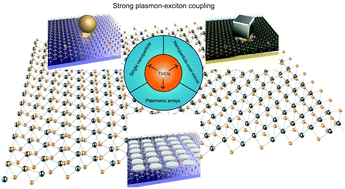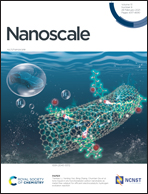Strong plasmon–exciton coupling in transition metal dichalcogenides and plasmonic nanostructures
Abstract
Achieving strong coupling between emitters and cavity photons holds an important position in the light–matter interaction due to its applications such as polariton lasing, all-optical switches, and quantum information processing. However, room-temperature polaritonic devices with subwavelength dimensions based on strong light–matter coupling are difficult to realize using traditional emitter-cavity coupled systems. In recent years, coupled systems constructed from plasmonic nanostructures and transition metal dichalcogenides (TMDs) have shown their potential in achieving room-temperature strong coupling and robustness in the nanofabrication processes. This minireview presents the recent progress in strong plasmon–exciton coupling in such plasmonic–TMD hybrid structures. Differing from a broader scope of strong coupling, we focus on the plasmon–exciton coupling between excitons in TMDs and plasmons in single nanoparticles, nanoparticle-over-mirrors, and plasmonic arrays. In addition, we discuss the future perspectives on the strong plasmon–exciton coupling at few-excitons level and the nonlinear response of these hybrid structures in the strong coupling regime.

- This article is part of the themed collection: Recent Review Articles


 Please wait while we load your content...
Please wait while we load your content...